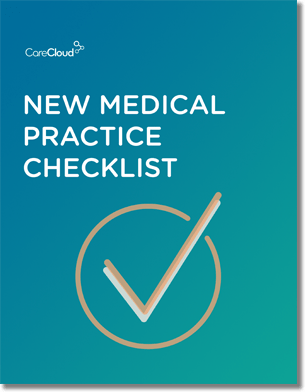I’m gratuitously throwing up a number to gawk at now – 91%. More than nine of every ten anything is reminiscent of toothbrush marketing: “9 of every 10 dentists agree these bristles are like Shiatsu massages for your gums.”
But according to a study by Vitera Healthcare Solutions, a whopping 91% of American physicians are interested in accessing electronic health records via mobile devices.
It seems like physicians are ahead of the curve on this one, despite their unwarranted, technology-averse reputation. But some of the technology’s embryonic challenges pose a threat to mass adoption.
That’s why we want to help you bridge the divide between your desktop and mobile EHR now before things get a little complicated.
Create a Desktop/Mobile Cross Strategy
While this first step feels like common sense, you’d be surprised how many physicians may forget there is even a link between their desktop and mobile EHRs.
For starters, stray from virtualization. Your best bet is to wait until your EHR develops a native mobile version before you rely on someone like Citrix who, despite its reliable technology, is not the ideal vehicle for doctors to use at the point of care. Clients like Citrix shoehorn EHRs onto tablets gauchely and are about as permanent a fix as a Band-Aid.
Develop efficient work habits on the tablet, too. There may be a difference in workflow, given the lack of screen real estate and processing power. Mobile won’t be your only solution – at least not right away – so it’s important to actively streamline your processes as your practice incorporates the technology.
Look for Speech Recognition
In a recent Healthcare IT News article, M*Modal’s Juergen Fritsch explains speech recognition is a “necessary [part] of a mobile device strategy.” Physicians are already using cellular phones to document clinical information, so one would think EHR vendors have picked up on this need in their mobile applications, right?
Well, not quite. EHR vendors aren’t opposed to recommending dictation for their clients, but it’s usually via a third party, like Nuance, for instance. But there’s something about the chemistry between speech recognition and documentation and note-taking that underscores the advantages of mobile EHRs. Also, look for native apps that fuse speech recognition with checkmark-based prognosis capabilities for efficient note-taking and capturing of patient info.
Healthcare Intelligence at Point of Care
While mobile EHRs should boast note-taking functions and chart, they won’t be worth much to you if you can’t access healthcare intelligence at the point of care.
Your mobile EHR should facilitate clinical decision support, which goes above and beyond off line analytics and requires a powerful infrastructure – something virtualization fumbles.
Efficient access to healthcare intelligence at the point of care promotes interoperability, not simply between your mobile and desktop EHRs but between you and other clinicians and specialists both local and remote.
And of course, whatever changes are made to the patient record, ePrescriptions, notes, and bookmarks within the clinical intelligence you’ve accessed should be reflected on your desktop version, unless you’re into Excedrin.
Has your practice adopted an EHR? If so, how did you do so successfully?

Do you know what you need when setting up a new medical practice?



